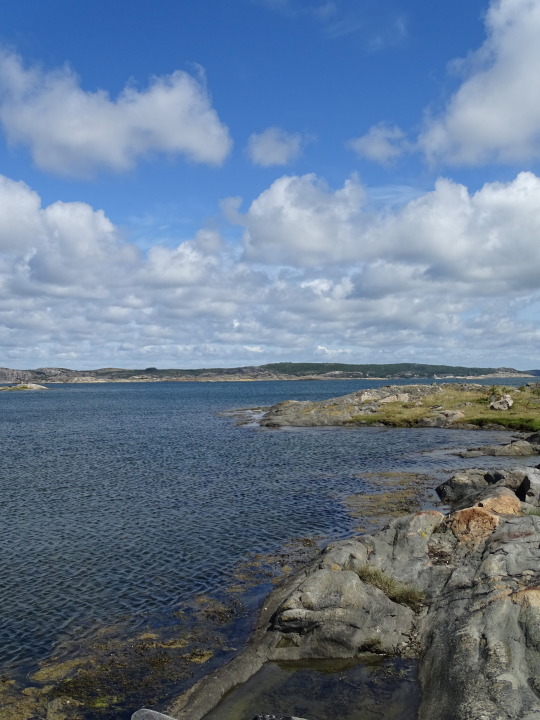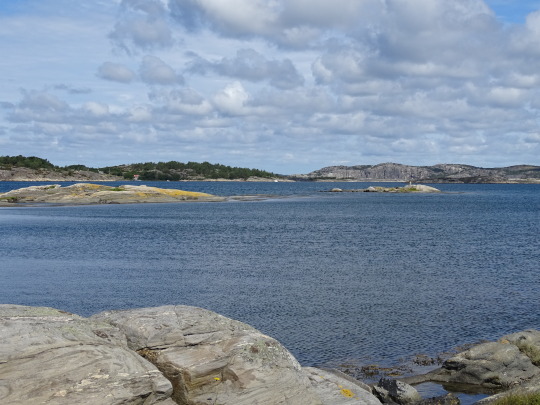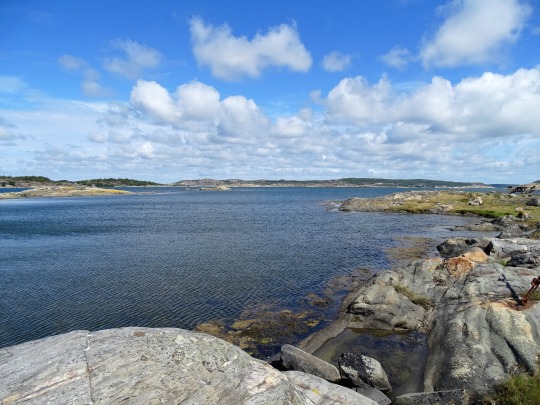#Koön
Photo
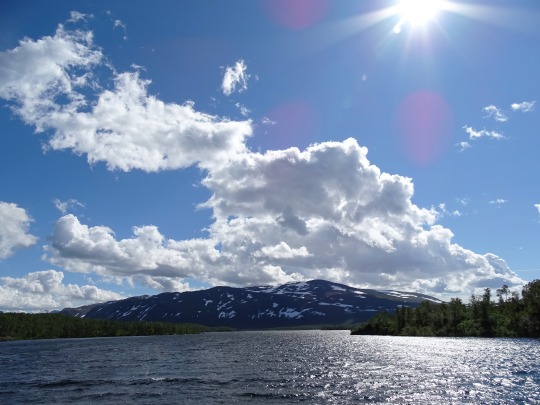
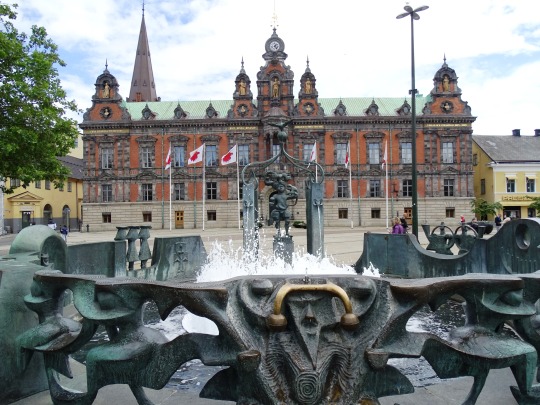



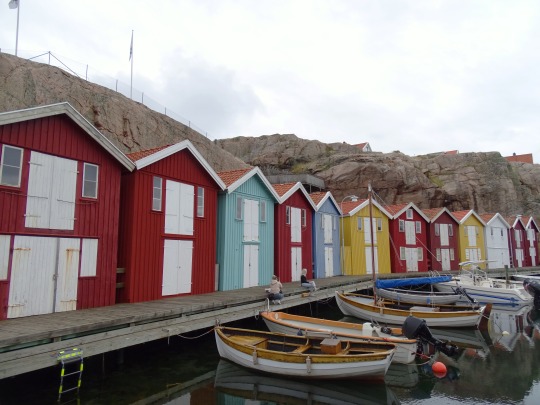




In a referendum, voters in Sweden decided to join the European Union on November 13, 1994.
#referendum#European Union#EU#13 November 1994#anniversary#travel#Lake Överuman#Lapland#Swedish history#Sweden#Sverige#landscape#Scandinavia#Northern Europe#summer 2020#original photography#cityscape#architecture#Malmö#Koön#Motala River#Norrköping#Njutånger#Smögenbryggan#Landskrona Citadel#Öland#Byrums Raukar#Stor-Laisan#Borgholm Castle
2 notes
·
View notes
Video
The Fishing Village by Henrik Sundholm
Via Flickr:
Part of the marine area in Marstrand, Sweden.
#landscape#marine#clouds#cloudy#sky#reflections#lake#bridge#house#hdr#marstrand#kungälv#bohuslän#sverige#sweden#koön#muskeviken#bay
1 note
·
View note
Photo

Koön, September 2019
9 notes
·
View notes
Photo
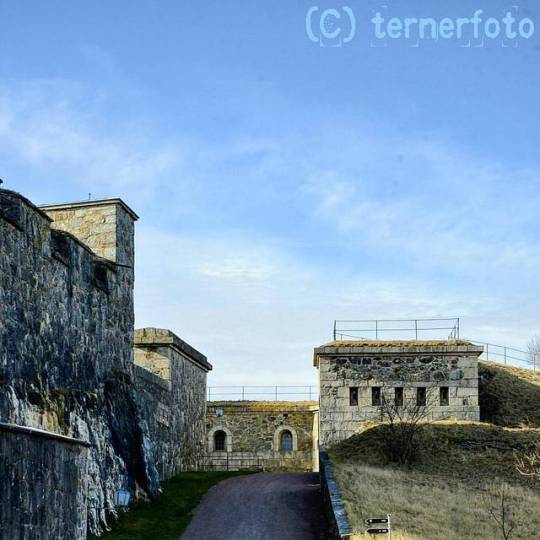
🏰 - #nofilter #vinter #kallt #himmel #moln #mur #fästning #Marstrand #Koön #Carlstensfästning #visitmarstrand #igsweden #igscandinavia #visitsweden #swedishmoments #seesweden @seesweden (på/i Carlstens fæstning)
#kallt#seesweden#visitmarstrand#nofilter#carlstensfästning#himmel#igsweden#mur#marstrand#koön#vinter#igscandinavia#fästning#swedishmoments#moln#visitsweden
0 notes
Photo
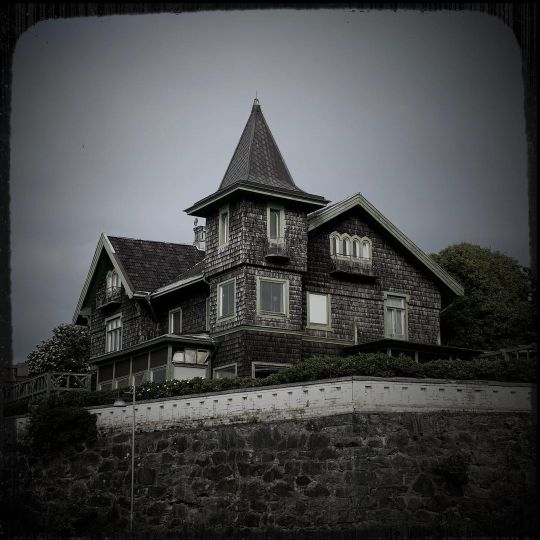
#house #old #sweden #pixelencounter #houses #villa (på/i Koön, Marstrand) https://www.instagram.com/p/CP2WFh4n-WF/?utm_medium=tumblr
0 notes
Photo

Lite höstlikt men väldans vackert här på Koön 👌🏻 (på/i Marstrand, Sweden)
0 notes
Text
Annæ auf Tour #13 Part 1/2
Donnerstag, 03.08.2017 - DER große Tag Frühes Aufwachen mit viel Aufregung. Natürlich nur meinerseits. Jan ist bereits auf dem Weg von Göteborg nach Marstrand. Wir holen auch gegen 0715 Uhr die Leinen ein und lichten den Anker. Anna ist ahnungslos. Es soll bald regnen, also müssen wir früh los. Freddy schiebt uns aus der kleinen Bucht an Koön entlang nach Marstrand. Als die Festung in Sicht kommt, erhalte ich Nachricht, das Jan nun auf die Linfärja steigt. Sie legt gerade auf Marstrandsön an, als wir deren Fahrwasser kreuzen. Perfekt getimet. Mal wieder. Jan macht sich direkt auf den Weg zur Festung rauf, um einen schönen Platz auszugucken. Wir finden im südlichen Hafen einen schönen Liegeplatz und gehen erstmal duschen. Da der Regen ja bald kommt, begeben wir uns nach dem Duschen und vor dem Frühstück auf einen Landgang. Is' klar, nä?! :-) Und, oh Wunder, führt uns der Weg direkt hoch zu Festung. Gar nicht so einfach, Anna auf Kurs zu halten, dass sie nicht irgendwo falsch abbiegt, um Fotos zu machen. Ich ziehe das Tempo an. Da, endlich sehe ich die Bank. "Anna, nun setz dich doch mal und guck mal, da unten sind wir lang gefahren und da hinten ist auch noch ein schöner Hafen. Und da, wo es so bewaldet, äääh bewohnt ist, ist es auch schön..." Herrje, bin ich aufgeregt. Wo bleibt er denn bloß, gleich will sie wieder aufstehen und Fotos machen....aaaaah! Dann steht, nein kniet er plötzlich neben ihr. Im Anzug, das Kästchen mit dem Ring vor sich haltend stellt er die Frage. Und Anna ist sprachlos, kann nur noch nicken. Ihr laufen die Tränen, Tränen der Überwältigung, der Freude. Und ich hab auch Pipi in den Augen. Wahnsinn, die Aussicht ist wirklich beeindruckend. Blick auf den Skärengarten, im Hintergrund die Carlsten Festung. Nachdem sich die Aufregung etwas gelegt hat, machen wir uns auf den Weg zum Schiff. Die Risikofrage: Frühstück im Cockpit oder im Salon wird uns von den ersten Tropfen abgenommen. Der Tisch wird gedeckt, es duftet nach Kaffee und Tee und wir haben richtig Hunger nach all den Erlebnissen des Morgens. Gemütlich sitzen wir um den Tisch und freuen uns mit all den fernen Freunden über das Ereignis. Fotos werden ausgetauscht, Glückwünsche entgegengenommen. Anna grinst von einem Ohr zum anderen. Ich glaube, ich mache einen Verlobungsservice auf: Ich segle deine hoffentlich zukünftige Frau zu einem schönen Ort und du fliegst ein und überraschst sie mit deiner Anwesenheit und einem Ring im Gepäck. Ein paar Flittertage sind im Anschluss möglich. Hmm, ich brauche noch eine Rettungsinsel, die ich hinterher ziehen kann, für etwas Privatsphäre. Heute abend wird jedenfalls gefeiert. Hier gibt's bestimmt irgendwo Eiswürfel. Und Jan ist etwas müde, die Aufregung, die Aufregung legt sich schwer auf die Lider.
0 notes
Text

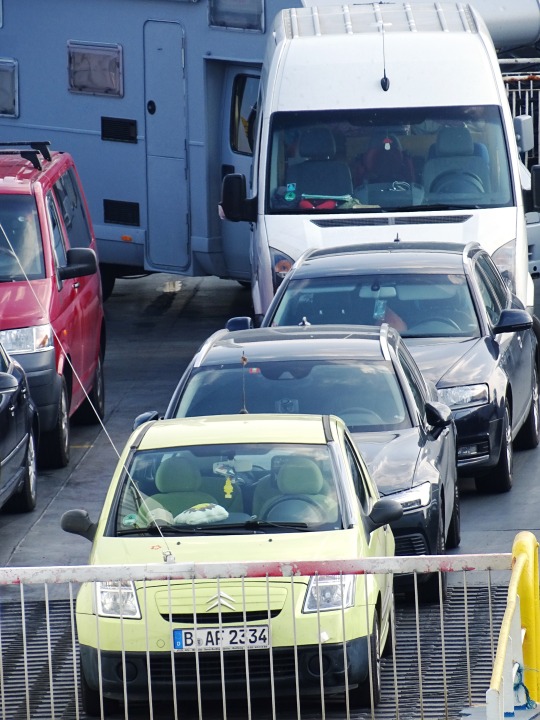
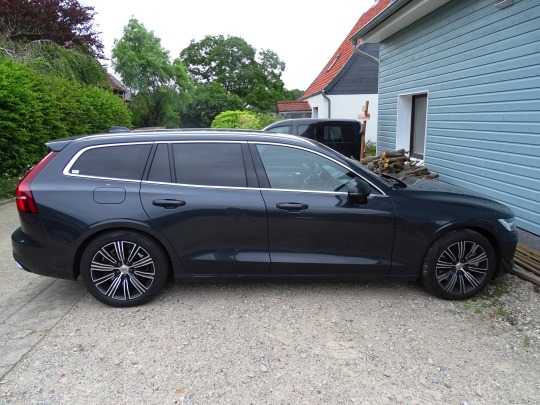
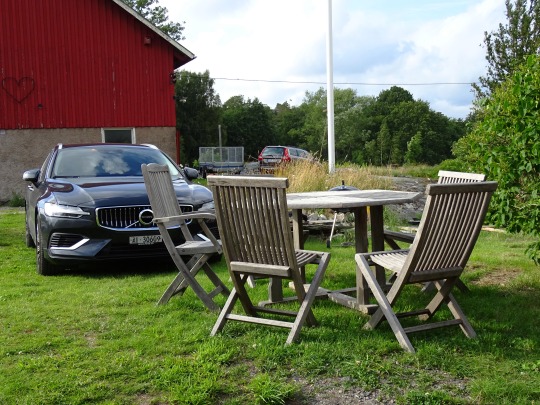
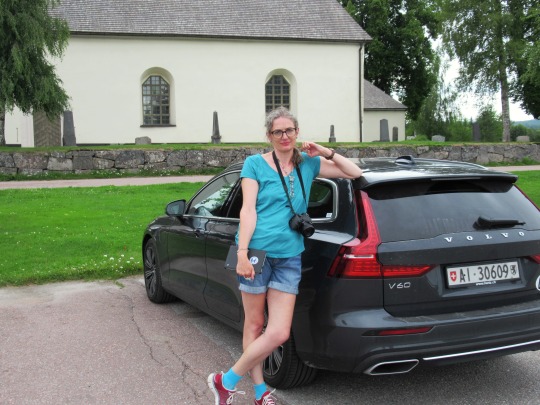
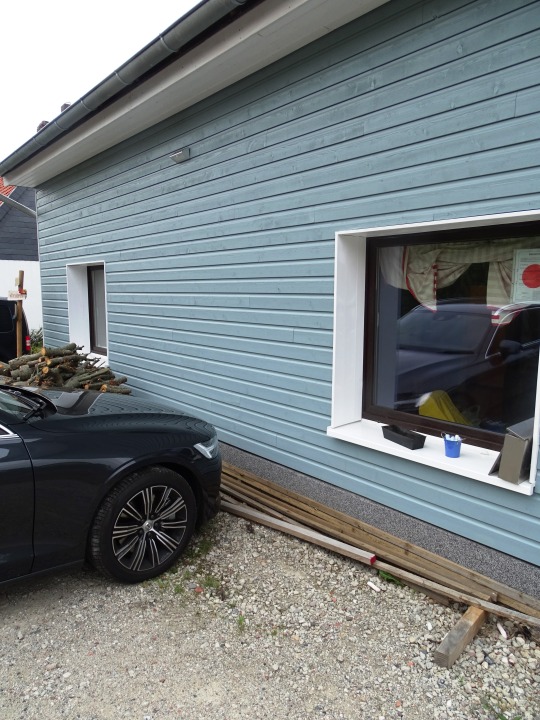
The first Volvo car left the assembly line on 14 April 1927, and was called Volvo ÖV 4.
#Volvo#Volvo V60#rental car#first Volvo car#14 April 1927#anniversary#Swedish history#engineering#technology#original photography#summer 2020#Sverige#Scandinavia#Northern Europe#Germany#travel#Deutschland#Koön#on board a ferry#MS Huckleberry Finn#TT-Line#tourist attraction#vacation#cityscape#architecture#landscape#landmark
0 notes
Text



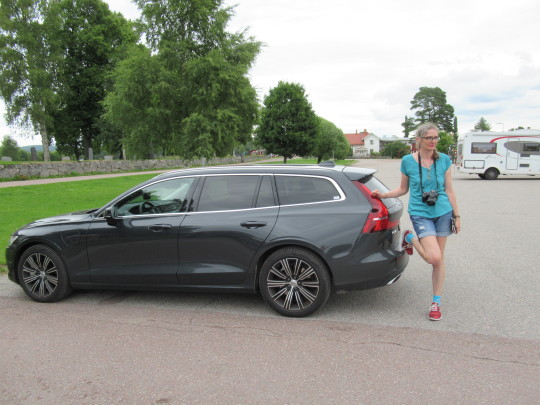

The buyout of Volvo Cars by Ford was announced on January 28, 1999.
#Volvo V60#Dala-Floda#Sweden#Sverige#rental car#Kungälv Municipality#Bohuslän#Koön#28 January 1999#buyout#25th anniversary#US history#Swedish history#original photography#summer 2020#travel#vacation#small town#ferry#on board#MS Huckleberry Finn#Germany#landmark#tourist attraction#cityscape#architecture#landscape
0 notes
Photo



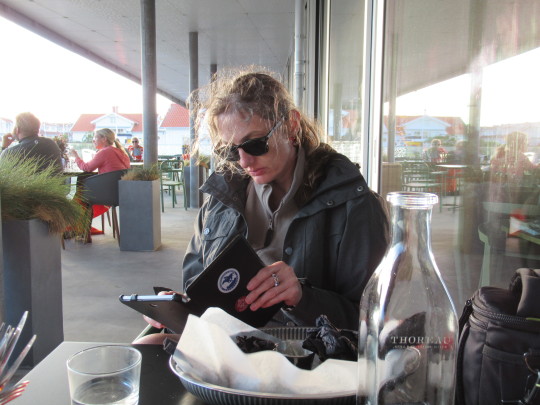






World Book Night
Get lost in an adventure, a romance, a mystery…whatever you like. Gather a group, volunteer at an event, or just take some time to enjoy a book on World Book Night.
Most everyone agrees that reading is vital for a child’s growth! But with all the challenges and difficulties of adulthood, many people in the prime of their lives hardly have any spare time to read. The factors present in why people don’t read can range from a lack of time to poverty to mental health concerns.
But reading is definitely important to read because of how much relief it provides from the difficulty and stress of the everyday world. Reading inspires people and educates people about the world around them, and can also function as an escape that relieves stress.
However, not everyone can see the benefits that reading can provide.
World Book Night aims to change the way adults view reading by encouraging them to take the time to read during the night–and to give away free books!
History of World Book Night
World Book Day has been around for some time now, offering extra opportunities and encouragement for children to read more books. However, because World Book Day existed for children, some people were motivated to put World Book Night together as a time for adults to read more books.
World Book Night began back in 2011 in the United Kingdom and Ireland, when Jamie Byng, MD of Canongate, conceived of the idea. It came to be after he had discussed it the previous year with various people who were present at the Book Industry Conference. The idea created another way for adults to take time out to read more and the day became a rousing success in its first decade.
In 2012, the day moved from March (which is still associated with children’s World Book Day) to April to coincide with UNESCO’s International Day of the Book. Then, in 2012 and 2013, the holiday grew and began to be celebrated in the United States. Over 50,000 people gave books to others on this day!
In late 2013, World Book Night benefited by becoming part of the Reading Agency, which is an organization focused on helping and encouraging others to read more books. Each year, books are given to people in hospitals, prisons, libraries, colleges, homeless shelters, and their communities through the Reading Agency and World Book Night.
The giveaway for these books has helped bookstores sell more books and continue their businesses. Volunteers go around their local communities and give away books, encouraging others to read and grow in their knowledge of the world.
All together, World Book Night is responsible for a whole host of people giving and getting books–and hopefully reading them as well!
How to Celebrate World Book Night
Celebrating World Book Night can be a fun and adventurous activity. Whether alone or joined together with a band of avid readers (or wannabe readers!), enjoy World Book NIght in these creative ways:
Volunteer and Participate in a World Book Night Event
Volunteer at a local reading library or bookstore to see about celebrating World Book Night and help give away some free books. Check in to see if the local community is hosting any events related to World Book Night. If there aren’t any, don’t be afraid to start one.
The World Book Night website offers access to resources for those who want to host their own book night events, including social media resources, print logos and guidelines.
Give Away Books for Free
Give books to those in a hospital, a care center, a homeless shelter, or a child daycare center. Check with a local bookstore to see if they’ll help arrange to give away some books to a good cause. To make it more affordable, books can be ordered in bulk online, purchased at a used bookstore, or even collected from thrift stores or garage sales. Reading used books is a great way to enjoy the written word and contribute to helping protect the planet.
Sit Down and READ
Of course, the entire sentiment of the day will be lost if people are only involved in World Book Day activities but don’t ever actually take the time to sit down and read a book! So be sure to also take the time to read a book late into the night and relax.
Technically, the ‘reading hour’ on World Book Night is considered to be from 7-8pm. The great thing about this is that, if people all over the world are reading during this time in their own time zones, then the ‘reading hour’ will last for a very long time as it moves around the planet!
For those who aren’t sure what to read, World Book Night offers a reading list each year that can help make recommendations or give ideas for what to read next.
Share Reading with Family and Friends
Reading doesn’t have to be a lonely activity! Try out these ideas for sharing this day with friends and family:
Recommend a favorite book to others and share the love of reading with everyone.
Ask friends, family or coworkers what their favorite books are and then discuss them.
Start a personal library of favorite collections of books and share those books with others to encourage more reading.
Join in on a book club or reading group–or start one if there isn’t one that already exists.
Host a quiz night with friends that centers around a literary theme.
Source
#Norman Bethune by David Pellettier#Stephen King's House#Bangor#USA#Toronto#Paradise#Bellagio - Las Vegas Luxury Resort & Casino#travel#Cincinnati#Boston#Koön#Bill Blass Public Catalog Room#Rose Main Reading Room#Stephen A. Schwarzman Building#Midtown Manhattan#New York Public Library Main Branch#476 Fifth Avenue#Carrère and Hastings#World Book Night#23 April#WorldBookNight#architecture#New York City#original photography#cityscape#vacation
1 note
·
View note
Photo

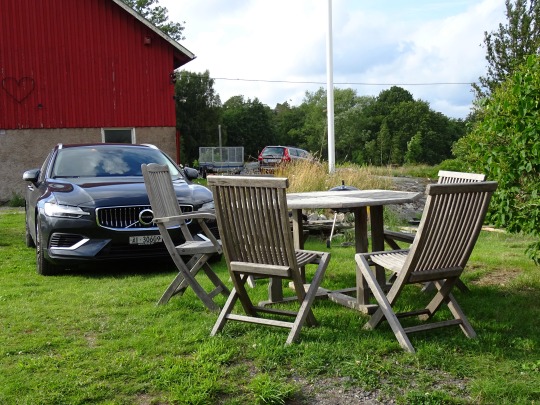

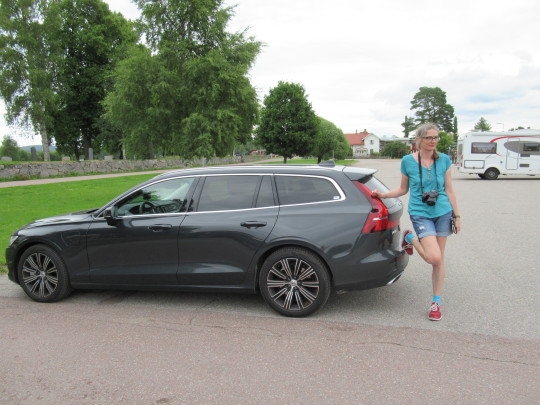

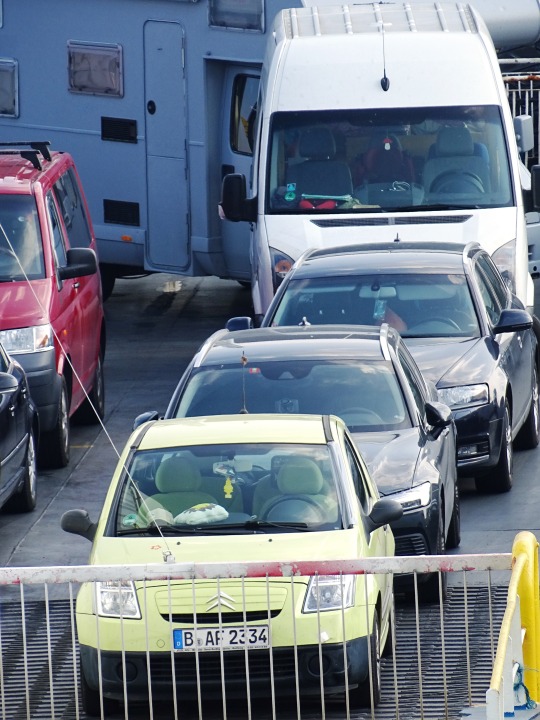
The first Volvo car left the assembly line on 14 April 1927, and was called Volvo ÖV 4.
#Volvo#Volvo V60#rental car#first Volvo car#14 April 1927#anniversary#Swedish history#engineering#technology#original photography#summer 2020#Sverige#Scandinavia#Northern Europe#Germany#travel#Deutschland#Koön#on board a ferry#MS Huckleberry Finn#TT-Line#tourist attraction
0 notes
Photo


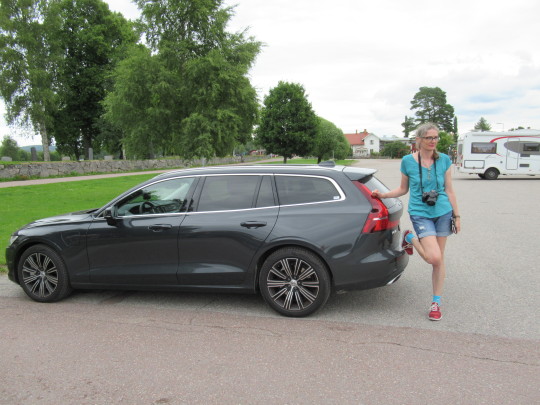

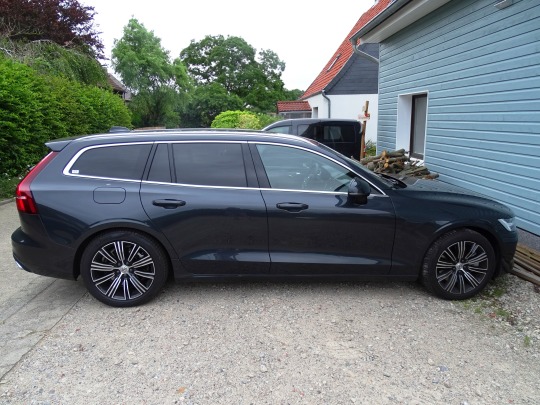
The buyout of Volvo Cars by Ford was announced on January 28, 1999.
#Dala-Floda#Sweden#Sverige#rental car#Kungälv Municipality#Bohuslän#Koön#28 January 1999#buyout#anniversary#US history#Swedish history#original photography#summer 2020#travel#vacation#small town#ferry#on board#MS Huckleberry Finn#Volvo V60#Germany
0 notes
Photo



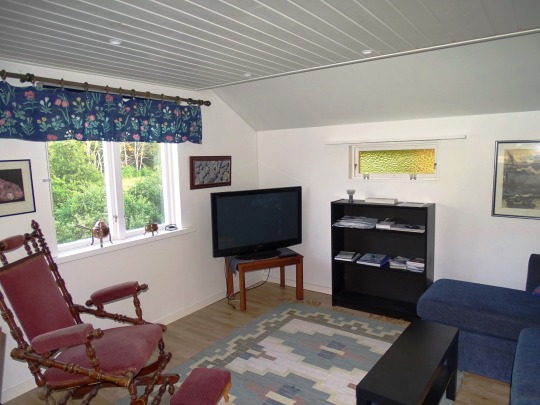



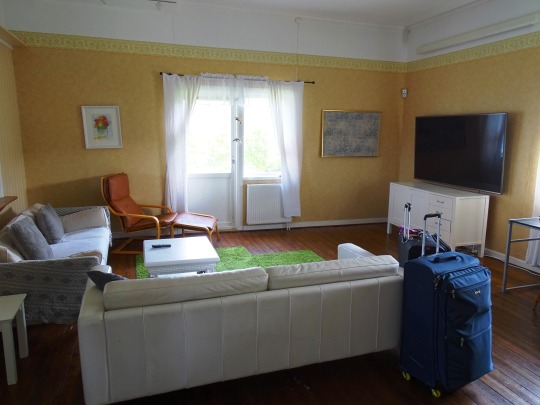


Color TV Day
Color TV Day is celebrated on June 25 every year. Watching color television is something most of us take for granted these days, but this wasn’t always the case. The first television programs we saw were in black and white, and that was the only way we could watch them. It wasn’t until the middle of the 20th century that color television watching became the standard in the United States. It is only fair that color televisions should be celebrated on their unique day, which is Color TV Day. This event commemorates the birth of color television and the role it has played in our culture since its inception.
History of Color TV Day
The development of fully colored television systems changed the face of television forever, and the world of television as we know it would be considerably different. Even though they were far more challenging to manufacture, numerous innovators across the globe worked hard to develop such a gadget that would allow millions of people to see wireless broadcasts that were replicated in vivid color.
Such attempts began in the experimental stage during the late 19th century. The first prototype appeared in 1928, public broadcasting in 1940, and black and white transmissions’ extinction began in the mid-70s. Following the tremendous success of black and white television broadcasting in the United States, CBS researchers, under the direction of Peter Goldmark, approved a heavy and massive mechanical television system in 1950, with the first color transmission taking place in June of the following year. Because of the expensive cost of color television sets and the limited quantity of color television material available, black and white television sets remained popular until the mid-1960s, even though many American television stations began broadcasting in color as early as 1954.
Color television quickly gained popularity in the United States and eventually expanded around the globe. While Europe awaited the solidification of American standards and a solution to their early technological challenges, they introduced the color PAL format in 1967, which was eventually adopted worldwide. It wasn’t until 1972 that sales of color television sets in the United States overtook black and white television sets for the first time.
Color TV Day timeline
1876 George Carey Has a Vision for Television
Carey, a Boston civil servant, envisions television systems, submitting plans for a selenium camera that will allow people to “see by electricity.”
1897 Karl Ferdinand Braun
Braun, a German scientist, is credited with creating the cathode ray oscilloscope, which serves as a predecessor of the television image tube.
1907 Experimental Television System
Rosing develops a practical television system that employs C.R.T. and mechanical scanning technology.
1953 Experiments With Color Television
The RCA Corporation makes television history by putting their revolutionary color system on the air during an edition of NBC's “Colgate Comedy Hour.”
Color TV Day FAQs
Can I still buy a black-and-white T.V.?
It is no longer possible to buy a new black-and-white set, though many are still offered for sale on sites such as Gumtree and eBay.
Do I require a television license?
To view or record programs as they are broadcast on television and on any channel, you must have a T.V. license, according to the legislation.
What was the first color and sound movie?
Without a doubt, most movie fans are aware that Al Jolson’s “The Jazz Singer” was the first ‘talkie.’ The first color film, on the other hand, is a little more obscure. “The Wizard of Oz” and “Gone With the Wind,” both released in 1939, are the most well-known color films.
Color TV Day Activities
Watch movies
Watch some great black-and-white films
Share on social media
Spend the day watching a movie marathon or a T.V. series. Appreciate the vivid color display.
View some early black-and-white television movies. This is a great way to remember how far television has advanced.
Share information about the day on social media. Use the hashtag #ColorTVDay.
5 Fun Facts About The Television
The first color T.V. was expensive
The first color T.V. show
The first live color T.V. broadcast
The production of color T.V.s was halted
The first color cartoon programs
The model was an RCA set with a 15-inch screen, which sold for $1 — the equivalent of $7,850 today.
CBS produced a television show called “Premiere” in 1951 that is widely considered the first color television transmission.
On New Year's Day 1954, the first live broadcast on national T.V. was “Living Color” — it covered the "Tournament of Roses Parade" in Pasadena, California
The manufacture of color televisions was halted during the Korean Battle due to a scarcity of metals required for the war, which were also needed to assemble color televisions.
"The Flintstones" and "The Jetsons" were the first cartoon series to be screened in color in the autumn of 1962.
Why We Love Color TV Day
T.V. is a terrific way to pass the time
Knowledge
Family cohesion
Nothing beats the escapism that a good T.V. show can provide. When you're irritated, upset, or in a bad mood, T.V. might offer you just the right amount of diversion to temporarily forget about your issues.
Television is a great way to learn new things in various industries. Educational presentations, creative shows, and competitive events provide a lot of knowledge about education and technology.
Whether you believe it or not, television is the one place where all the family members can sit together. It brings families together!
Source
#L‘ Hotel#Barstow#Montréal#Loews Miami Beach Hotel#travel#Sofitel Philadelphia#Le Saint Pierre Auberge Distinctive#Québec#Canada#hotel room#AirBnB#MS Allure of the Seas#Koön#Östersund#Germany#architecture#interior#vacation#tourism#tv screen#Color TV Day#25 June#ColorTvDay#engineering#technology
0 notes
Photo
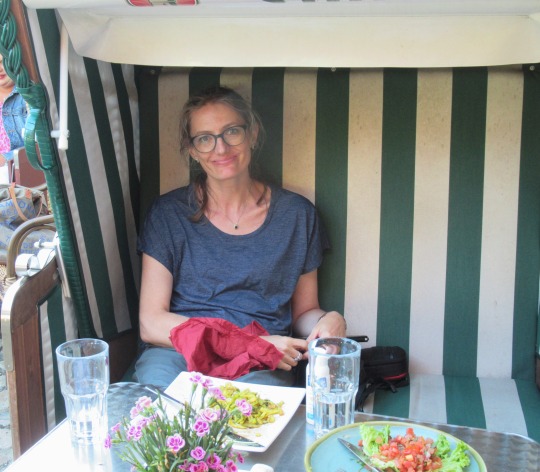








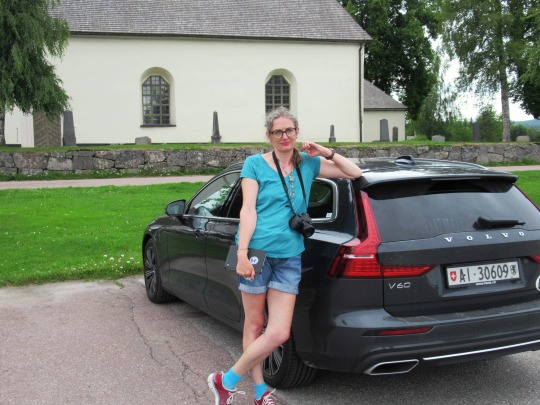
World Sauntering Day
World Sauntering Day celebration is on the 19th June of every year. The purpose of the Sauntering day is to remind us to take it easy and smell the roses. It is celebrated to enjoy the life as opposed to the rushing through it. It is also sometimes referred to as the International Sauntering Day. Sauntering is a verb which describes the style of walking, It is not a sashay, trot, prance, o lollygag. It is just to walk slowly preferably with the joyful disposition. Sauntering has been spoken of most notably by many of the naturalist writers in the history including the Henry David Thoreau and the John Burroughs.
History Of World Sauntering Day
The Word Sauntering denotes the walking in slow and relaxed manner, without hurry or effort. The Exact origin of the day is unclear, but it is credited to have begun at the Grand Hotel, which is located in Mackinac Island in Michigan. It happened during the 1970s. A response by the W.T.Rabe to a growing movement towards the recreation of jogging. Some records show that it was started by the W.T.Rabe in 1979 as a reply to the sworn enemy of the Saunter, Jogging. The idea was to encourage the people, instead of jogging, to slow down to appreciate what is around them. The Sauntering Day is the opportunity for you to head out into the world and approach it with a deeply relaxed air, you can feel the moment of pure clarity and joy, all these happen while enjoying the beautiful world which is around you and everything it has to offer.
How to Celebrate World Sauntering Day
The Celebration of the World Sauntering Day is much relaxed, and there is no restriction to move around or instead saunter. Anyone can do it women men and even children of all ages or groups. It is the day, in which everyone has a chance to roam, ruminate and rove. You don’t need any things or products. All you need to do is just give yourself plenty of time in this day and do so with the goal of relaxing and truly enjoying your journey to wherever it is you have to go. It is pure relaxation, and you can take in the scents and sights while you walk. You can also greet others and go with the group too. It is the day which gives you the opportunity to leave all the rush behind and just saunter through the day.
Source
#World Sauntering Day#19 June#InternationalSaunteringDay#summer 2020#travel#vacation#Sweden#Germany#Rostock#Koön#Landskrona Castle#Öland#Hamra#Dala-Floda#Slussfors#Warnemünde#Benitz#Rättvik#Långbryggan#cityscape#landscape#architecture#tourist attraction#landmark#original photography#Sverige#Scandinavia#Northern Europe#cat#Lake Siljan
2 notes
·
View notes
Photo



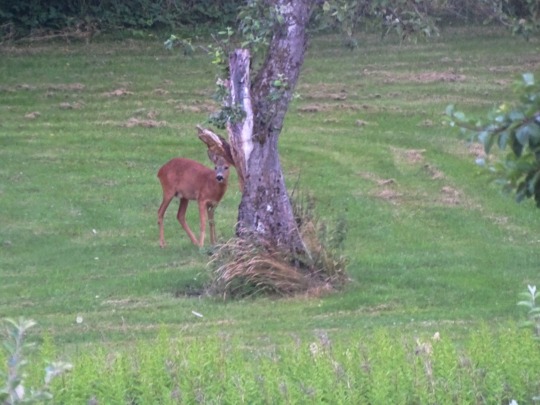



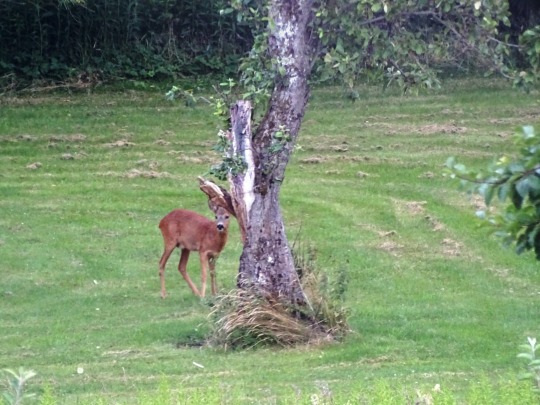

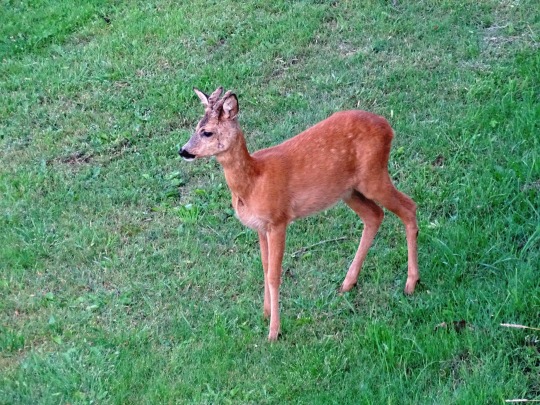
Koön, Sweden (No. 2)
The roe deer (Capreolus capreolus), also known as the roe, western roe deer or European roe, is a species of deer. The male of the species is sometimes referred to as a roebuck. The roe is a small deer, reddish and grey-brown, and well-adapted to cold environments. The species is widespread in Europe, from the Mediterranean to Scandinavia, from Scotland to the Caucasus, and east to northern Iran and Iraq.
The roe deer is a relatively small deer, with a body length of 95–135 cm (3.1–4.4 ft) throughout its range, and a shoulder height of 63–67 cm (2.1–2.2 ft), and a weight of 15–35 kg (33–77 lb). Populations from Urals and northern Kazakhstan are larger on average growing to 145 cm (4.8 ft) in length and 85 cm (2.8 ft) at shoulder height, with body weights of up to 60 kg (130 lb), with the deer populations becoming smaller again further east in the Transbaikal, Amur Oblast, and Primorsky Krai regions. Bucks are slightly larger than in does in healthy populations (where the population density is restricted by hunting or predators). Males from populations in bad conditions are similar or slightly smaller than females.
Bucks in good conditions develop antlers up to 20–25 cm (8–10 in) long with two or three, rarely even four, points. When the male's antlers begin to regrow, they are covered in a thin layer of velvet-like fur which disappears later on after the hair's blood supply is lost. Males may speed up the process by rubbing their antlers on trees, so that their antlers are hard and stiff for the duels during the mating season. Unlike most cervids, roe deer begin regrowing antlers almost immediately after they are shed.
Source: Wikipedia
#Koön#Kattegat#Marstrand#island#Bohuslän#Västra Götaland County#Kungälv Municipality#summer 2020#landscape#architecture#cityscape#ship#travel#vacation#original photography#flora#fauna#wildlife#stuga#rose#flower#roe deer#lawn#door#countryside#Sweden#Sverige#Scandinavia#marina#Northern Europe
4 notes
·
View notes



